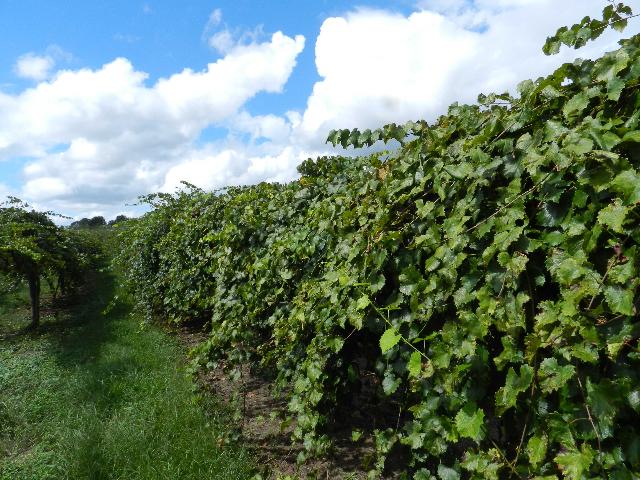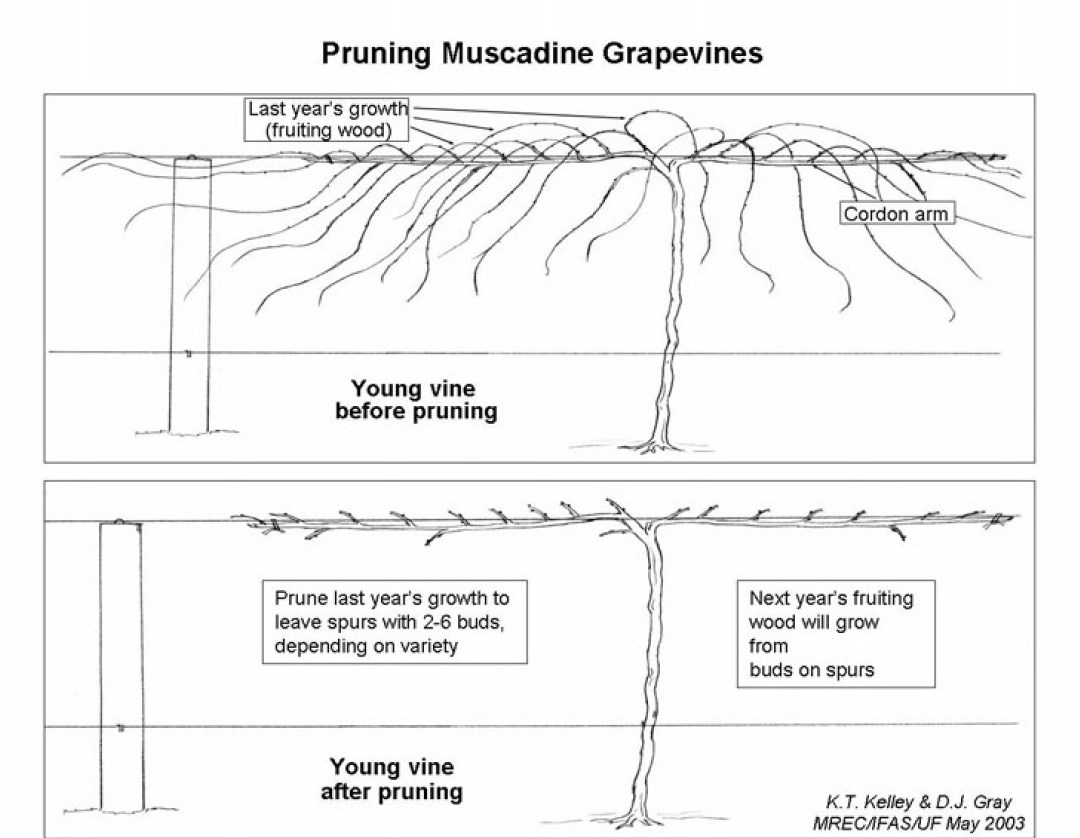Last year, I wrote an article for this newsletter about late bearing muscadine cultivars. There are many early, mid, and late bearing cultivars, and a list can be found in the publication: The Muscadine Grape. August is the very beginning of the muscadine harvest in the Florida Panhandle, which may last through October. Contrary to popular opinion, however, vine pruning should not follow harvest, and should be delayed until winter.
Once harvest concludes, it is usually a grower’s natural inclination to immediately prune their muscadine vines. Pruning after harvest in early fall is not, however, best for maintaining plant condition and optimizing next year’s yield, especially if there is an early frost. Early frosts can surprise the plant before sugars have been moved to the roots for storage during dormancy. Therefore, waiting to prune in mid-January to mid-March will ensure that the vine has had adequate time to go dormant and acclimate to the winter season.
Muscadines flower and fruit on shoots from the current, not previous, years growth. These new bearing shoots arise from the leaf axils of the previous years’ growth. Pictured above is the bi-lateral cordon training system. This is the most popular system for muscadine production. Pruning must be performed to maintain this configuration. If vines are too vigorous, it is acceptable to prune lightly throughout the growing season.
Vines must also be trimmed before weeds are sprayed with herbicides to at least 2 feet above the ground. Nonselective systemic herbicides will not harm grapevines with hardened bark, but must not come in contact with green tissue, or it will be translocated to the roots and damage the plant.
Using the bi-lateral cordon system, there are two main branches or “cordons” of the vine. Along each cordon, fruiting spurs should be spaced approximately every six inches. Each fruiting spur should contain 2-4 nodes.
If fruiting spurs become more than one foot from the cordon, it is time for spur renewal. This is typically done every 3-6 years. Entire spurs can be removed, if they lose productivity and are replaced by new shoots. Additionally, cordons may lose productivity or die off after 5 to 10 years of production. If this occurs, simply remove the cordon and train a new or existing branch into a new cordon.
Pruning with a design in mind, and at the proper time will enhance the performance and longevity of muscadine vineyards.
Information from this article was derived from The Muscadine Grape
- Steps to Remedy Non-Productive Pecan Orchards - June 30, 2023
- If Not Disease, Then What? Abiotic Vegetable Disorders - June 24, 2022
- Dormant Sprays Protect Fruit Trees from Future Insects and Diseases - January 28, 2022


